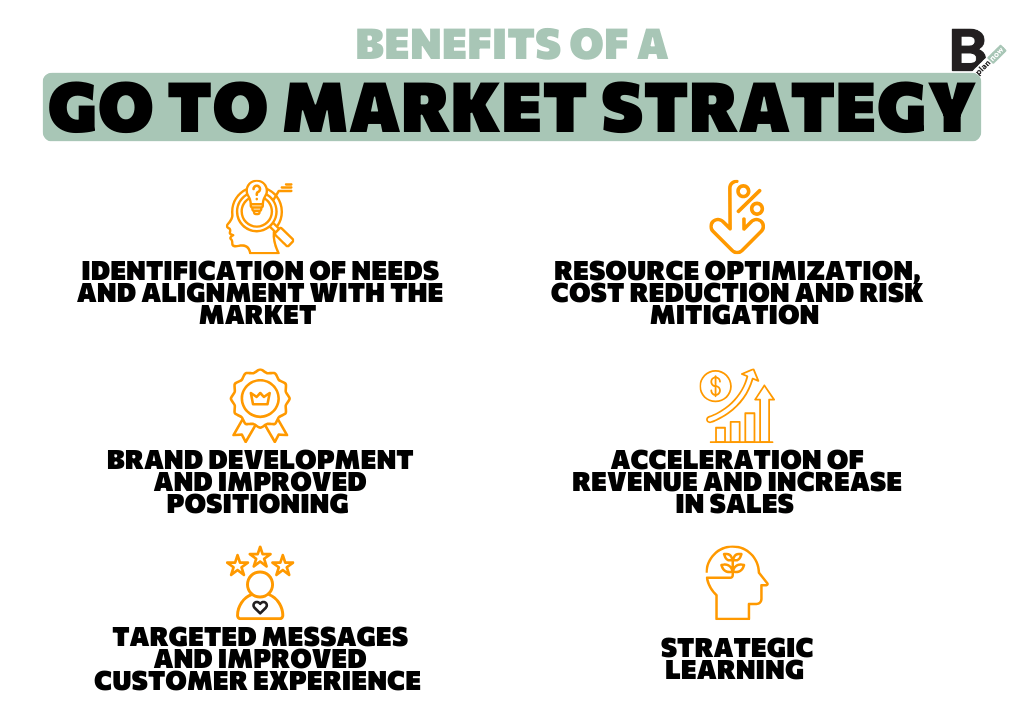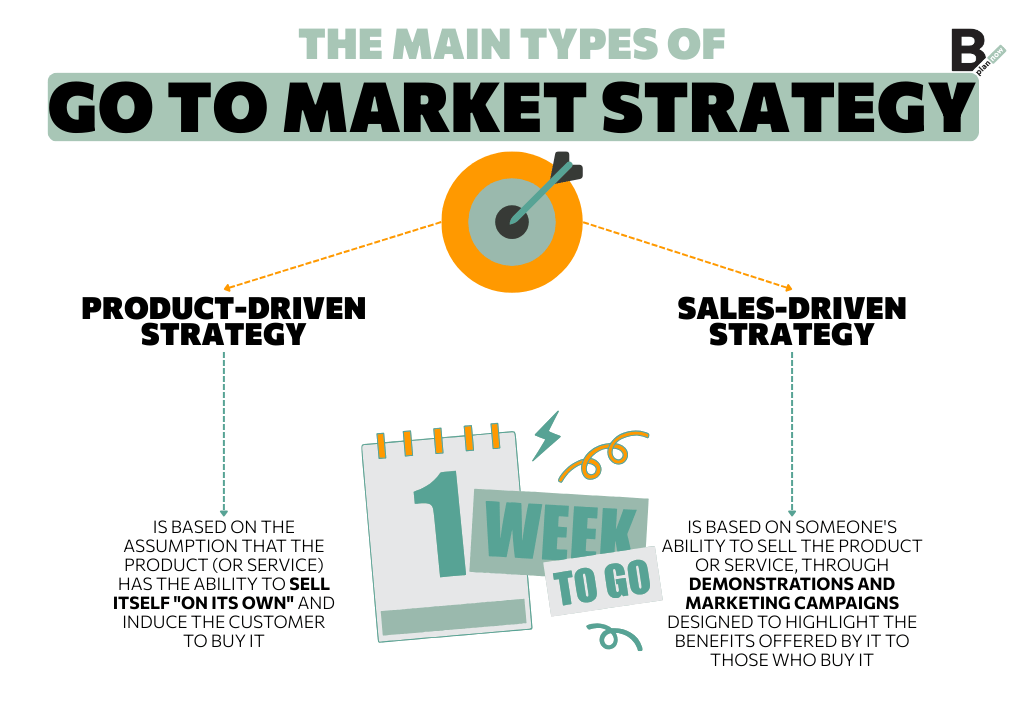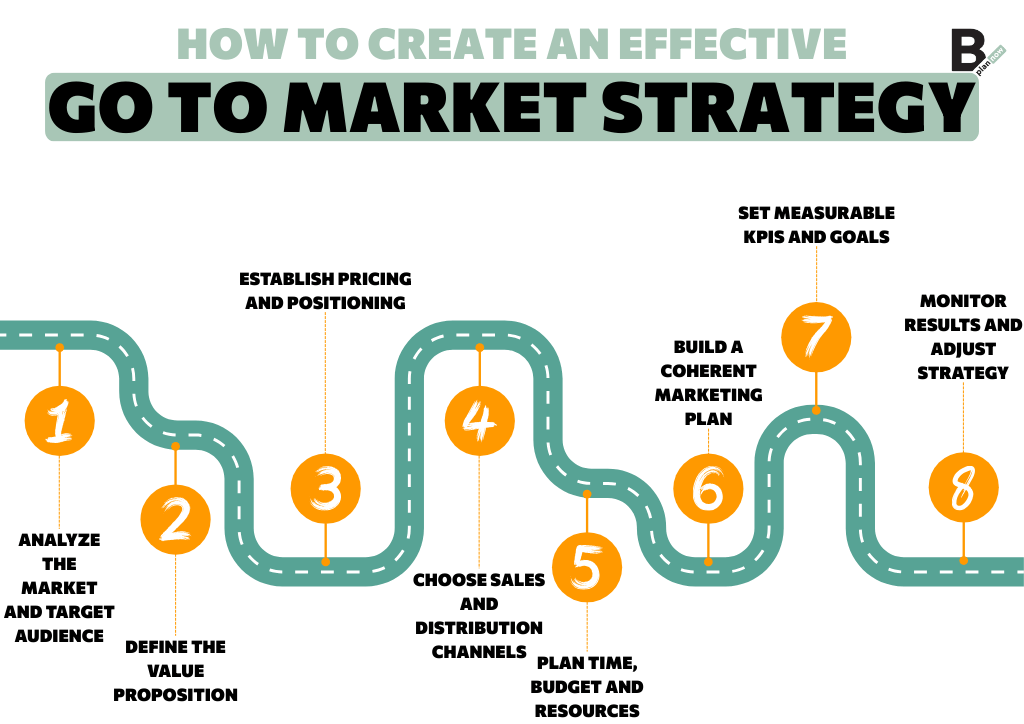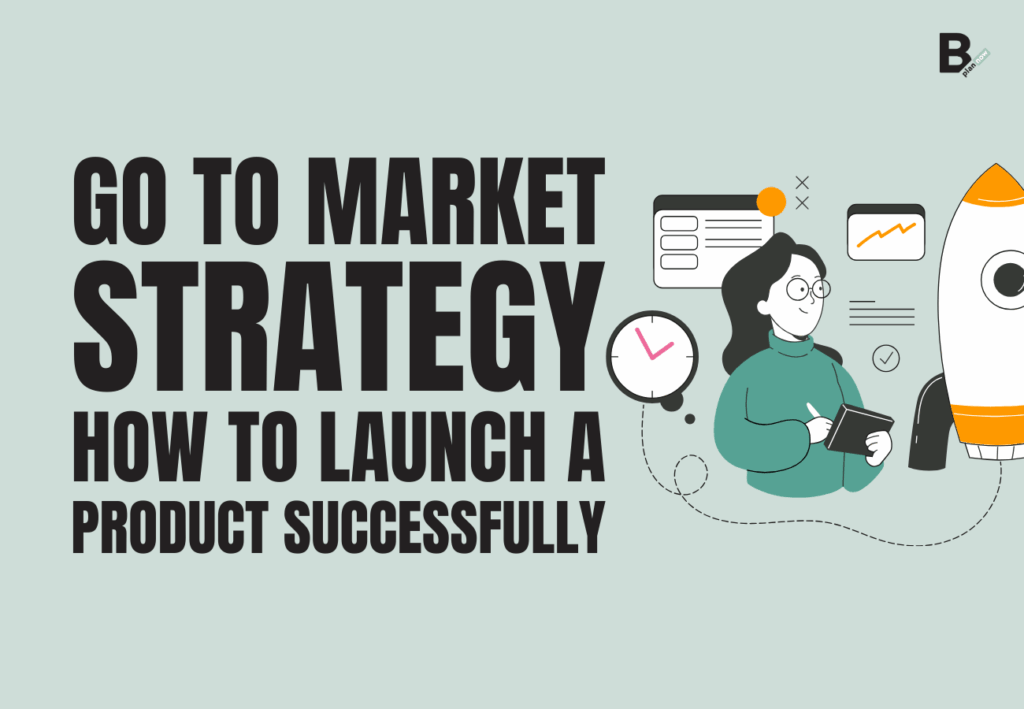If you are about to launch your product or service on the market, you absolutely must first develop a Go To Market Strategy. Do you know what we are talking about? This guide explains step by step how to build an effective and competitive market entry strategy to reach your target audience. The first step, of course, is to clarify what a Go To Market Strategy is, starting with its definition.
What is a Go-to-Market Strategy?
Every time you launch a product or service on the market, you need to develop and follow a strategy. This strategy is called a Go-to-Market Strategy. Let’s define it better.
Definition and objectives
The Go To Market Strategy, also known by the acronym GTM, is the strategy that startups and companies adopt to launch their products or services on the market and reach their target audience.
Its objective is to highlight the needs and preferences of the customer segment being targeted and to enable the design of offers that can satisfy those needs and desires. To achieve this objective, this strategy involves market research and sales and marketing plans, as well as considerations related to pricing and sales channels.
What it is for and when to apply it
The Go To Market Strategy helps to clarify ideas about the market, the positioning of the product or service within it, competitors, and prices.
More specifically, it allows you to understand what works and what doesn’t, to identify the path to take by optimizing resources and reducing costs, and, last but not least, to increase sales while also improving the customer experience.
There is another aspect to clarify: so far, we have talked about Go To Market Strategy in relation to when you need to launch a new product or service on the market. However, it is also very useful when you need to launch an existing product or service in a new market or when you need to rebrand.
That’s not all: you should know that this strategy can be applied at any time. When a startup is launched, it is likely that a Go To Market strategy has already been defined, because it is thanks to this strategy that all activities can be organized. However, when a new product or service needs to be introduced (or when expansion into new markets is necessary), it will most likely be necessary to study and adopt another strategy.
Why a Go To Market strategy is important
In the previous lines, we have mentioned several times what a Go To Market strategy is for, but it is necessary to explore the topic in greater depth, clarifying once and for all why it is important to adopt such a strategy when planning to sell goods or services.
The advantages for companies and startups
Below is a list of the main advantages that a Go To Market strategy can offer companies and startups.

- Identification of needs and alignment with the market (a GTM strategy allows you to identify customer needs and desires and ensures that the product or service is better aligned with market demand, thus increasing the likelihood that it will be accepted by the target audience)
- Resource optimization, cost reduction, and risk mitigation (a well-defined plan allows for better allocation of available resources, anticipation of potential problems, and reduction of risks associated with introducing a product or service to the market)
- Brand development and improved positioning (thanks to the Go To Market strategy, companies and startups can better develop their brand and, by focusing on their distinctive features, are able to achieve more effective market positioning and gain market share by outperforming the competition)
- Acceleration of revenues and increase in sales (launching a product or service on the market after studying a GTM strategy means that it is adopted more quickly and sales targets are achieved sooner and more easily)
- Targeted messaging and improved customer experience (a Go To Market strategy involves creating targeted messages and building a positive customer experience, leading to increased loyalty and generating positive word of mouth).
- Strategic learning (a Go To Market strategy is also effective because it allows you to gather feedback from customers and competitors and adapt your approach based on the information collected).
Differences from a traditional marketing strategy
It is time to clarify the difference between a Go To Market strategy and a traditional marketing strategy. Or, rather, the differences.
Both affect the success of the product or service and, in practical terms, tend to overlap, but while the GTM strategy describes the process by which the product or service is introduced to the market and into the hands of the end customer, a traditional marketing strategy focuses “only” on how the product or service is communicated and perceived.
In practical terms, therefore, the marketing strategy represents a sort of subset of the Go To Market strategy, focused on creating demand through communication and branding. To put it another way, the marketing strategy focuses on “who” and “why” wants the product or service, while the GTM strategy focuses on “where” and “how” it will be sold and distributed.
The main types of Go To Market Strategy
So far, we have talked about Go To Market strategy, but you should know that there are different types. There are two main types: product-driven GTM strategy and sales-driven GTM strategy.

Product-driven strategy
The product-driven strategy is based on the assumption that the product (or service) has the ability to sell itself and induce the customer to buy it. An example of this type of strategy is when a company offers “basic” products for free and then offers upgraded versions for purchase.
Sales-driven strategy
The sales-driven strategy, on the other hand, is based on someone’s ability to sell the product or service through demonstrations and marketing campaigns aimed at highlighting the benefits it offers to those who purchase it.
How to create an effective Go To Market Strategy
Here we go: you are about to discover how you can create an effective Go To Market Strategy in 8 simple steps.

1. Analyze the market and target audience
The first step you need to take to define your Go To Market strategy is to perform a market analysis to identify trends, opportunities, and challenges, as well as the positioning of your startup.
Your research should also focus on your target audience: a valuable tool at your disposal in this regard is buyer personas, i.e., archetypes of your customers. The first questions you need to ask yourself are: what are the demographics of these people? What are their interests and values? What needs and desires can I fulfill for them?
2. Define your value proposition
The next step is to define your value proposition, which is a brief statement that allows you to communicate why your customers should choose your product or service over those of your competitors.
To define your value proposition, you must first analyze the competition to understand who is already selling something similar to your product or service and what their sales strategy is.
Then, focus on your product or service to understand what makes it better than others. Start with your target audience and find out what you can offer that is unique compared to your competitors.
3. Establish pricing and positioning
In the third step, you need to think about how to calculate the selling price. To establish the pricing (and positioning of your product or service), you need to consider the production costs and how much customers are willing to spend to purchase your product or service, also based on the prices charged by competing companies.
Remember that the price set at the time of the product or service launch can be changed at a later date.
4. Choose sales and distribution channels
We have now reached point 4 of our guide on how to create an effective Go To Market strategy, which is where sales and distribution channels come into play. The question that everything must revolve around is: what is the best way to reach your target customers and make yourself visible to them? Evaluate different sales and distribution methods if you want to increase your chances of success.
5. Plan your timing, budget, and resources
Planning time, budget, and resources is another fundamental step that you must not ignore if you want to create a truly winning Go To Market Strategy. Only in this way can you understand how much money you have and what you need to effectively promote your product or service.
6. Build a coherent marketing plan
Remember the difference between a Go To Market strategy and a marketing strategy? The sixth step is about defining a marketing plan, which should be as detailed as possible and contain your key message (your unique value proposition) and the marketing channels you have chosen to promote your product or service.
Don’t forget to establish who will be responsible for your marketing strategy, so that everyone involved is accountable and nothing is left to chance.
7. Set KPIs and measurable goals
Measuring performance is essential: to do this, you need to set clear (in line with your startup’s goals) and measurable objectives and set precise marketing KPIs, such as customer acquisition cost, conversion rate, and retention rate.
8. Monitor results and adapt your strategy
Setting measurable goals and precise KPIs allows you to monitor the results of your Go To Market strategy, understand what is not working, and make the most appropriate changes based on clear and unambiguous data and numbers.
Go-to-market strategy for startups: practical advice
Below you will find some practical tips for building a winning Go To Market strategy for your startup.
How to test before launch
Before launching on the market, you can test your product and offer it to a sample group of target consumers so that they can use it and evaluate its qualities.
This analysis phase allows you to investigate various aspects, from price to more “emotional” factors (such as the alignment of the product with the values of target customers), and enables you to collect quantitative and qualitative data on the basis of which you can then modify the entire strategic approach or just certain components of the product.
Useful tools for GTM in the early stages
In the early stages of a Go To Market strategy, you can use some useful competitive analysis tools for social media, such as Sprout Social, and for SEO, such as SEMRush. You should also know that there are competitive analysis tools based on Artificial Intelligence, such as Kompyte and Crayon.
Practical example of a Go To Market strategy
We are about to tell you a story that will help you understand that even the most prestigious brands need to develop a Go To Market strategy. This story, which is a practical example of the application of a Go To Market Strategy, is about Starbucks and how, in 1999, it managed to expand into China.
At the time, many within the company feared it would be a flop, since coffee was not as popular in China as tea. The Starbucks team spent several months studying the characteristics of the new customer base and the internal differences between the various regions of China.
In the end, the brand decided to open its first stores in metropolitan areas with the highest concentration of tourists, so that those who were already familiar with the brand could promote it in the new market. Not only that, but Starbucks also modified its menu, adding several tea-based products.
Thanks to a precise and effective Go To Market strategy, Starbucks’ launch in China proved to be an absolute success.
Lessons from real cases
What do real-life Go To Market Strategy cases (such as the Starbucks case mentioned above) teach us? Two things: the first is that even big brands need to develop a well-calibrated strategy to enter unexplored markets or launch new products or services. The second is that, as already pointed out (and as just mentioned), a Go To Market strategy should be studied not only when launching a new product or service in a market, but also when planning to expand into other markets, different from those already “covered” previously.
Why invest in a Go-to-Market Strategy
We have come to the end of this guide and, given the advantages, it should now be clear to you why you should invest in a Go To Market Strategy. If not, a famous quote by Dwight D. Eisenhower may clarify your ideas:
“In preparing for battle, I have always found that plans are useless, but planning is indispensable.”
In our case, planning through a Go To Market Strategy is “essential” to better understand the needs and desires of target customers and offer them what they want most, optimizing available resources and reducing costs and risks.
Do you want to read all the articles related to the stage your startup is in?


